The squaretails are a genus, Tetragonurus, of scombriform ray-finned fishes, the only genus in the family Tetragonuridae.
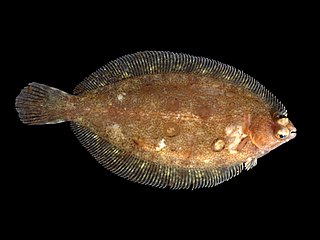
Microstomus is a genus of righteye flounders native to the northern Pacific and north-eastern Atlantic oceans.
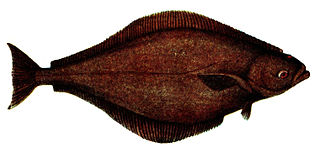
Hippoglossus is a genus of very large righteye flounders. It comprises two species of halibut, with one species native to the northern Atlantic Ocean and the other species native to the northern Pacific Ocean.

Atheresthes is a genus of righteye flounders native to the northern Pacific Ocean where both species are important commercially.

Eopsetta is a genus of righteye flounders native to the northern Pacific Ocean.
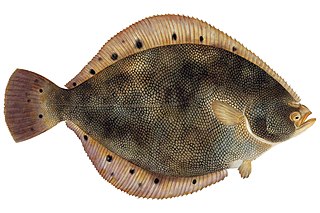
Verasper is a genus of righteye flounders native to the north-western Pacific Ocean.
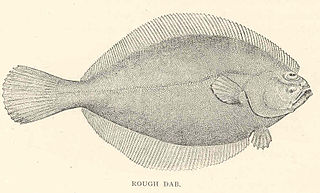
Hippoglossoides is a genus of righteye flounders native to the North Pacific and North Atlantic oceans.
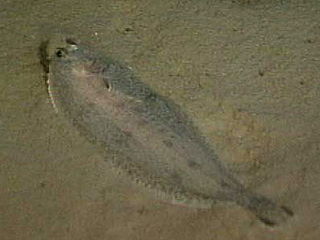
Glyptocephalus is a genus of righteye flounders found in the northern Atlantic and northern Pacific Oceans
Hypsopsetta is a genus of righteye flounders native to the Pacific coast of California and the Baja California peninsula, as well as the Gulf of California.
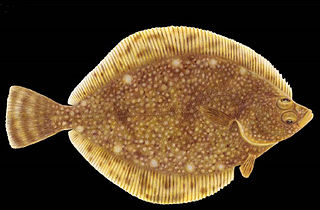
Lepidopsetta is a genus of righteye flounders native to the North Pacific Ocean.

Paraplagusia is a genus of tonguefish. It is indigenous to the Indo-Pacific region, where commonly found in shallow waters on a muddy or sandy bottom. The largest species reaches 35 cm (14 in) in length.

Sarda is a genus of medium-sized, predatory ray-finned fish in the family Scombridae, and belonging to the tribe Sardini, more commonly called the bonito tribe. There are four species which comprise the genus Sarda. One of those species, the Pacific bonito, is further divided into two subspecies.

Schedophilus is a genus of ray-finned fish in the family Centrolophidae, the medusafish. The genus has a global distribution.

The blacksail snake mackerel, known also as the black snoek, is a species of snake mackerel found in the Indo-Pacific from shallow water to a depth of at least 400 m (1,300 ft) where they appear to prefer slopes on seamounts and ridges. They are known for making diel vertical migrations to near-surface waters at night, feeding on fish, squid and crustaceans. This species reaches a total length of 2 m (6.6 ft) though most are around 1 m (3.3 ft). This species is of minor importance to local commercial fisheries. It is at the only member of the genus Thyrsitoides, making the genus monotypic.
Nesiarchus nasutus, the Black gemfish, is a species of snake mackerel found in tropical and subtropical waters in most parts of the world, though not in east Pacific and north Indian waters. It occurs at depths of from 200 to 1,200 metres though they make diel vertical migrations from benthopelagic to mesopelagic depths at night. This species can reach a length of 130 centimetres (51 in) SL though most do not exceed 80 centimetres (31 in) SL. It is of minor importance to local commercial fisheries. This species is currently the only known member of its genus, Nesiarchus.
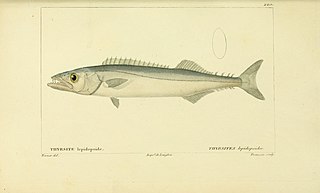
Thyrsitops lepidopoides, the white snake mackerel, is a species of snake mackerel found off the coasts of South America from Brazil on the Atlantic side to Chile on the Pacific side. It can be found at depths of from 30 to 350 metres. This species can reach a length of 40 centimetres (16 in) SL though most do not exceed 25 centimetres (9.8 in) SL. It is of minor importance to local commercial fisheries. It is currently the only known member of its genus.

Brachirus is a genus of small and medium-sized soles. Most are native to marine and brackish waters in the Indo-Pacific, but several species can also be seen freshwater in southern Asia, Eastern Africa, New Guinea and Australia.
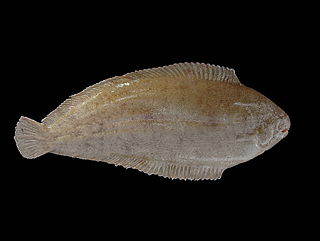
Solea is a genus of soles from the Indo-Pacific and East Atlantic Oceans, and the Mediterranean Sea.
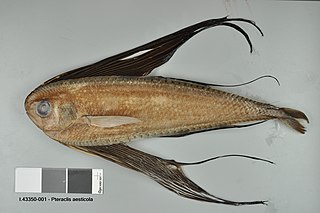
Pteraclis is a genus of ray-finned fish in the family Bramidae, the pomfrets. They are known commonly as fanfishes. The three species are distributed throughout the oceans of the world.
Samaretta perexilis is a species of fish in the family Samaridae found from deep-waters from submarine mountains of the southern eastern Pacific. This species is the only member of its genus.

















